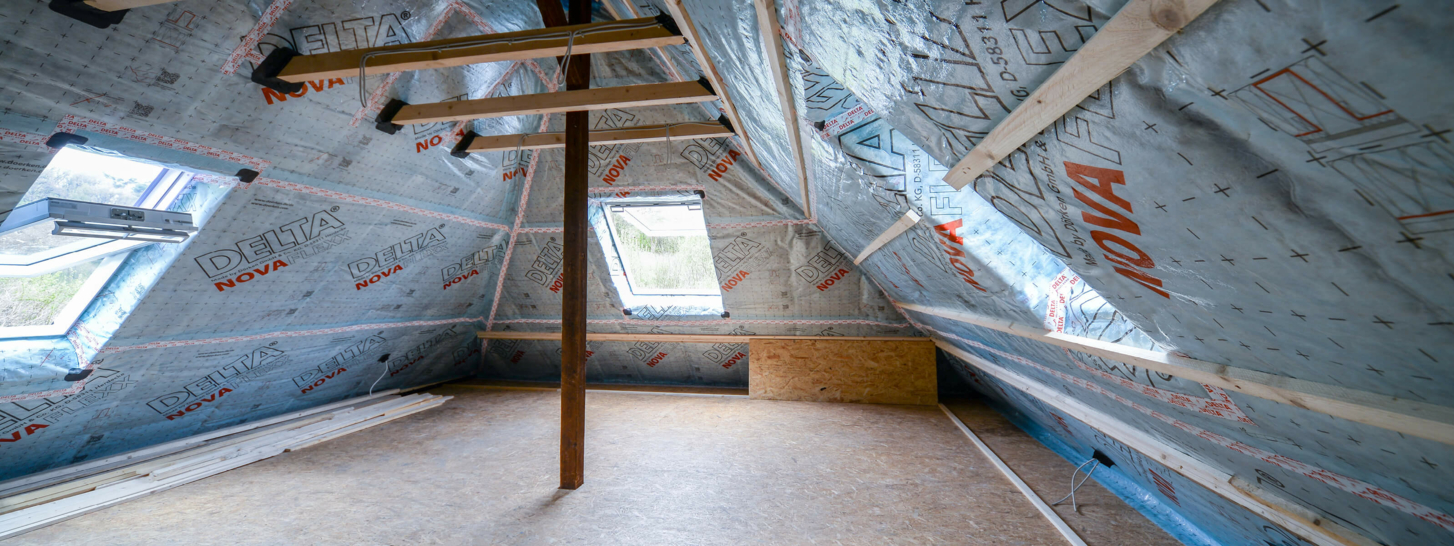Generally speaking, a well-designed airtight and windproof building shell works like a ski jacket: There is an outer and an inner functional layer with different tasks and requirements while the lining and thermal insulation are positioned in between.
Windproof layer (= the outer layer)
The windproof layer is laid on the outside in front of the thermal insulation (for example, mineral fibre insulation), e.g. with DELTA® roofing membranes with bonded seams and joints. It permits the reduction of the air currents coming from the outside to the inside. In Germany the windproof layer is recommended without being standardised. Consequently, it is not a main requirement. However, it offers a number of advantages, such as for example an increased rain resistance and a more efficient thermal insulation.
Airtight layer (= the inner layer)
The airtight layer is usually laid under the thermal insulation on the inside of the room, e.g. for example in combination with the air and vapour barriers of DELTA®. The materials must have a sufficiently low air permeability and can meet other requirements, such as the material-specific water vapour diffusion resistance, the so-called SD value. The airtight layer must be produced as a circumferential airtight surface in which seams, and joints, penetrations and connections are for example sealed by means of DELTA® adhesive systems.
 Belgium nederlands
Belgium nederlands Belgium français
Belgium français Canada english
Canada english Canada français
Canada français China chinese
China chinese Czech Republic čeština
Czech Republic čeština Deutschland deutsch
Deutschland deutsch France français
France français Hungary magyar
Hungary magyar International english
International english Italy italiano
Italy italiano Netherlands nederlands
Netherlands nederlands Poland polski
Poland polski Russia русский
Russia русский Slovakia slovenčina
Slovakia slovenčina Switzerland français
Switzerland français Switzerland deutsch
Switzerland deutsch Turkey Türkçe
Turkey Türkçe USA english
USA english
